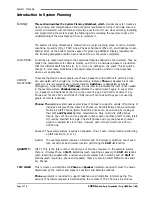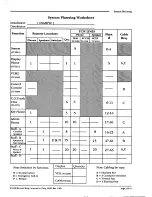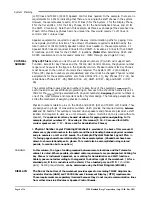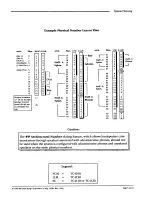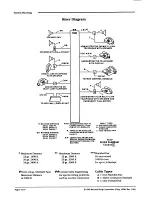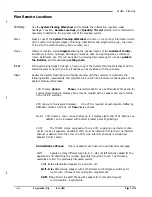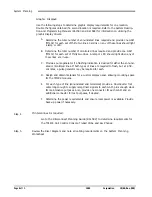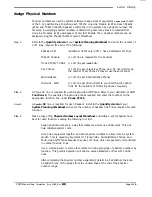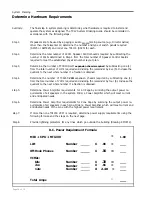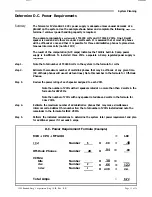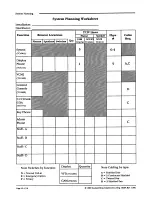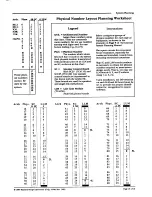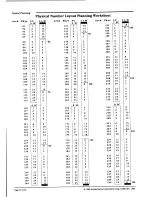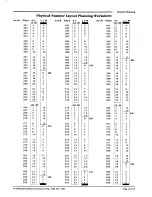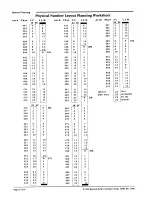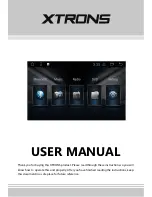
System Planning
Plan Remote Locations
Summary:
Use the
System Planning Worksheet
and complete the information required under
headings: Function,
Remote Locations,
and
Quantity. This will
provide all the information
necessary to determine the size and cost of the required system.
Step 1. Make a copy of the
System Planning Worksheet
and note on it any other information which
will be useful during later stages of planning, installation, and programming (e.g., the name
of the site, the contact person, phone number, etc.).
step 2. Obtain or create a scaled
diagram
showing the physical layout of the
customer’s facility,
including: all rooms, hallways, doorways, entrances, exits, and parking areas, conference
rooms, bathrooms, etc. This will be useful in achieving total coverage, for use as a
guide to
the installer,
and for
estimating
cabling costs.
NOTE:
Step 3.
While performing Steps 3 through 5, have a copy of the System Planning Worksheet and the
scaled diagram at hand to ensure all options can be reviewed with the customer.
Review the System Description and facility drawing with the customer to determine the
following system requirements and complete the Function and Remote Locations areas of the
System Planning Worksheet.
LCD Display
phone: These
are recommended for use as Attendant Phones and for
system programming. A display phone may be coupled with a speaker and any combina-
tion of call-in switches.
VFD (Vacuum Fluorescent Displays): One VFD is required at each location staffed by
Attendant stations which do not
have
display phones.
Note: LCD Drivers 1 and 2 can each drive up to 3 displays (LCD and VFD).
The
drive ca-
pability can be increased with buffers (contact Sales Engineering).
VCM: The TC4001 comes equipped with one VCM, supplying one intercom chan-
nel for use by all speakers. Additional VCMs must be installed if more than one intercom
channel is desired. Note that only one VCM (one intercom channel) is allowed per
Speaker Control board.
Administrative Phones:
One is needed for each user who will dial calls and page.
Staff:
Specify as many different types (A, B, C, etc.) of staff stations needed for the
application and determine the number (Quantity) required of each. The following
examples are from the previously discussed system:
Staff -
A is
a Stand-alone speaker for a corridor, etc.
Staff - B is
a
Stand-alone speaker with both Normal and Emergency switches for
rooms with infrequent communication requirements.
Staff - C is
a Multi-Link Staff Phone with speaker for rooms with frequent
communication requirements.
1989
Corporation (Orig. Rev. l/89)
Page 7 of 16


